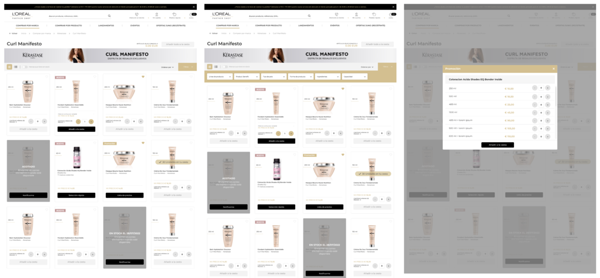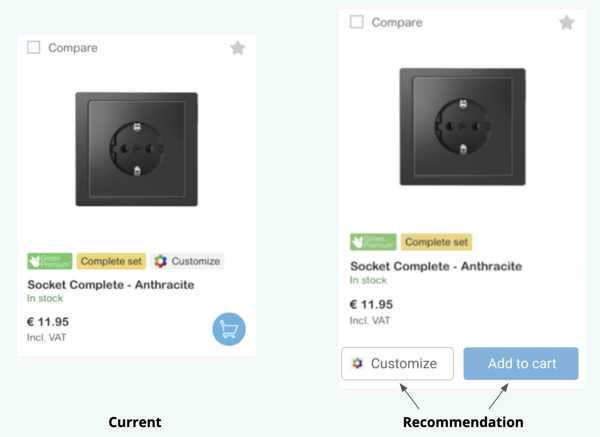March 23, 2023
B2B UX research: examples, best practices and challenges
UX design has become an essential aspect of designing digital products that cater to consumer needs. Companies are beginning to understand that building quality applications and websites cannot be done without considering the user experience. While UX is becoming increasingly important for products targeting consumers, there’s still plenty of room for improvement in the B2B context, particularly for conducting market research and user testing with professional target groups.
We already wrote about B2B user testing for professionals. Today, we’re going to look at the challenges specific to B2B UX Research, solutions, and examples from the following sectors: beauty, transport, industrial manufacturing and insurance services.
Which professionals are we targeting exactly?
To start with, there are different types of business-to-business contexts:
Professionals who are (almost) like end consumers
In some professional contexts, users will have needs that are very similar to B2C. In our various projects for highways and gas stations, we noticed the key difference between those was the systematic need for an invoice or receipt for accounting purposes. Interestingly, there’s a segment of end consumers who closely manage their budgets. This B2C segment had exactly the same expectations as the professionals who answered our B2B market research through quantitative surveys.
Context-based professions
As we’ll see below, some professionals’ experience can be heavily impacted by the environment in which they are using them. For example, if you’re targeting sales advisors in-store, there’s a good chance you’re manipulating products with and for your customer, making access to a digital device intermittent at best. We’ll get back to this with examples below.
Experts
Many fields require a high level of specific expertise such as health, finance, energy, etc. Conducting research in this situation requires specific skills, either through an experienced moderator or through some training provided by your customer.
Understanding upfront which type of professionals you are conducting B2B market and user research with will change your approach in terms of recruitment and optimization.
Going full-digital with B2B e-commerce, are we?
A specific need of professionals in an e-commerce context is the reluctance to go full-digital and the need for interactions with people. It’s especially the case when a website replaces direct relationships with salespeople, on the phone or face-to-face. For example, a confidential customer of ours is a company selling insurance and some users are accustomed to having someone on the phone. When websites change habits from former direct relationships with salespeople, the experience you are building has to take into account this specificity.
Furthermore, payment methods also have to be adapted: an e-commerce website for professionals must offer relevant ways of payments for this target (wire transfers and other payment facility tools)
B2B user recruitment techniques
Targeting professionals and building your sample
Recruiting B2B participants for market research and user testing can be challenging, such as veterinarians in different countries for our customer Royal Canin, but not impossible. Different possibilities can help with recruitment, such as:
- working with specialized partners,
- client files or databases,
- or even reaching out in real life or on social networks.
Making sure the field research happens despite professionals being highly time-sensitive
Standard research methodologies still apply in the B2B context. Individual interviews especially are a great candidate with some adjustments. For example, in our experience with restaurant owners or hairdressers with L’Oréal in Canada among other countries, we face users who are always busy and running between clients, making it difficult to book appointments in advance. Remember that when they answer your questions, they are not able to address their own customers, therefore effectively losing turnover and thus making the time they offer to you even more precious. Therefore, researchers must find creative and flexible ways to work, such as:
- conducting two short calls rather than a long interview,
- splitting the research between face-to-face and autonomous feedback,
- or going to the participant's workplace.
Ethnographic and observation techniques can hence be particularly relevant in a B2B context.
B2B tools optimization: it’s all about understanding the tools of the trade!
Researchers must understand the job their B2B target is doing and their specific goals and constraints. For instance, consider the example of Schneider Electric's spare part website, where the goal is to find the right spare parts quickly. It is essential to understand that sometimes, these technicians work on parts that are very damaged or difficult to access, making it impossible to see the reference number of the part they are working on. Hence, the website must provide another way for them to identify the right product. B2B tools tend to be more complex than B2C ones, and researchers must take the time to get a real understanding of the tool they're working on. Solutions include getting trained, having a moderator experienced in the field, etc.
Employee experience, B2B experience, same struggle?
It is crucial to understand that employees are also users. Not only can professional tools be optimized, but a lot of other internal systems (communication, HR, project management, admin...) that are used every day and often have poor usability. To work properly with employees, there must be support within the organization for what researchers are doing. It must be explained that the goal is to make better tools for them, not to force them into new ways of working. Conducting change requires buy-in from employees, so it is essential to communicate and collaborate with them.
Change management is the key signature of UX Design and Research in B2E or Business-to-Employee.
UX metrics in B2B context
In most B2B contexts, UX metrics are often different and should be defined upfront, so you don’t optimize the wrong indicator. The focus is usually less on conversion and brand image and more on:
- Adoption: again we cannot stress enough how what would be “good UX” in a B2C context can fail due to a lack of change management.
- Efficiency: most B2B users want to get the job done quickly and stress-free. Who could blame them?
- Sustainability: designing a B2B experience also carries an opportunity for positive impact, as it will play on the user’s mental and/or physical health in some way.
So is B2B user research really different?
Basically yes: we’re still using the same techniques but we’re applying them differently for B2B. The optimization of user experience is still often overlooked in the B2B context and the key differentiator is often UX research. Recruiting B2B participants for market research and user testing can be challenging, and researchers must find creative and flexible ways to work with them. Understanding the tools that B2B targets are using is also critical, and researchers must take the time to get a real understanding of the tool they're working on. Additionally, it is important to consider the employee experience.
Are you working on the optimization of B2B tools? Or an in-store B2B experience with or without digital components? Contact us to talk about it, we have many other B2B customer cases we would be happy to share!
All articles from the category: User research | RSS


